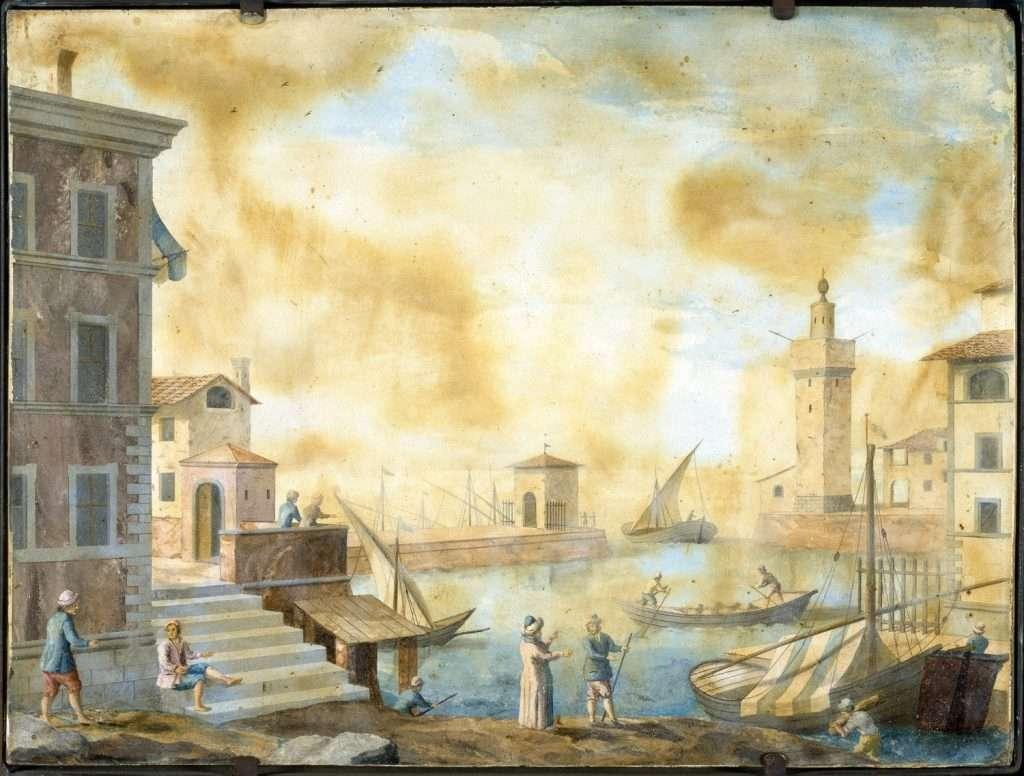

Descrizione
Alongside the collection of artworks realized by its workshop, the Opificio also conserves other artefacts commissioned by the grand dukes, similar in materials and technique to the commesso or Florentine mosaic. We are referring to painting on stone, which uses a stone slab as the support of an oil painting. The natural color of the stone becomes part of the pictorial image. In this room there are several of the paintings made in the first half of the seventeenth century, whose support is the Arno stone, also known as pietra paesina – that means “landscape stone” – typical of the Valdarno area, so-called since its structure recalls visions of rocky landscapes. Another stone used for this purpose was the lineato d’Arno, whose greyish and bluish veining is suitable and effective in reproducing waterscapes. The painter did not add any colours on the background stone slabs, because, as we can read in a 17th century text, the panel was already “completed with no need to add anything else”. The artist exploited the natural background and painted only the figures, such as hermit saints or ships in marine landscapes.
Sezione successiva

